GamesRadar+ Verdict
The Xbox Series S delivers on its core promise of being the best place to play for gaming at 1080p, although its small storage presents problems right out of the box for a system with an all-digital future.
Pros
- +
Small form factor that offers big performance
- +
Impressive backwards compatibility
- +
Best place to play for 1080p gaming
Cons
- -
Small SSD storage
- -
Needs more showcase games
Why you can trust GamesRadar+
With the Xbox Series S and Xbox Series X, Microsoft is putting the future of this console generation into the hands of the players. Traditionally, console manufacturers dictate the direction of a new generation. If you look back, you'll see companies like Microsoft and Sony treat the launch of new hardware as a chance to give players a glimpse into their visions for the future of gaming. If players vibe with it, developers will spend the ensuing years trying to deliver on the early promise and potential, pushing the frontiers of play to accomplish it. And if they don't? Just look to the early years of the Xbox One to find your answer. Manufacturers might set the tenor of a generation, but that doesn't mean they always get it right the first time.
This time, Microsoft is launching two consoles simultaneously in an attempt to corner two areas of the market. The Xbox Series X is a capable and commanding console with the capacity to change the way that we play, arriving with a renewed focus on power and performance as was once synonymous with the Xbox brand. The Xbox Series S is a more affordable and accessible point of entry to the Xbox ecosystem, a system with shared philosophies and different priorities. It's an all-digital system that targets high performance in a small package, with a focus on improving the quality of play rather than raising polygon counts.
The Xbox Series S has been positioned as the best way to play for those with neither the interest nor the means to play in 4K. It wants to deliver the best experience possible at 1080p, focusing on improving frame rates, lowering latency, and increasing your digital footprint. It wants to be the best place to play for those that are coming home to Xbox after a generation away, and just one part of a broader ecosystem that now encompasses PC and mobile devices. The Series S isn't the future of gaming, but it is a signal of where we might be heading if players are eager to see Microsoft's vision come to life.
XBOX SERIES S HARDWARE AND DESIGN

It's easy to be startled by just how small the Xbox Series S is when you first get it into your hands; 10.8 inches tall, 5.9 inches deep, and 2.5 inches wide, weighing in at just 4.25 pounds. Where the Xbox Series X and Xbox One look as if their cases were designed to do little more than house components, the Xbox Series S looks designed – and trust me, there's a difference. The matte white finish is clean and clinical, with the face of the Series S sporting a single USB 3.1 gen 1 port, a pairing button that conceals an IR receiver, and an Xbox logo power button that glows lightly as you play.
The back of the console is similarly sparse. As part of Microsoft's ongoing commitment to promoting accessibility, there are tactile Braille indicators above each of the rear ports – a slot for storage expansion, two additional USB ports, gigabit Ethernet port, and an HDMI 2.1-Out. I do believe that there are missed opportunities with respect to future-proofing, the biggest of which is a lack of support for Wi-Fi 6 – a feature of the PS5 and incoming standard that allows for faster data transfer over wireless connections. The Series S is an all-digital machine, and Microsoft appears to believe that we'll still be messing around with Ethernet cables long into the future; I'd wager that this is a miscalculation.
The space conscious among you will be happy to learn that there is no power brick, and that the cables are exactly the same as those used by the Xbox One X and PS4 – regardless of whether you are upgrading your console or coming home, all you'll need to do is slot this new box into the existing space. It's clearly been designed to sit horizontally and you'll want to make sure its fan exhaust has room to breathe; despite being whisper quiet, the Series S will get as hot as a well-used Xbox One X so think carefully about ventilation. The Xbox Series S is undoubtedly the best looking console Microsoft has ever engineered and it's markedly nicer on the eyes than both the Xbox Series X and PS5. Of course, in the grand scheme of things, the visual design doesn't matter all that much – it's what's contained within that makes all the difference.
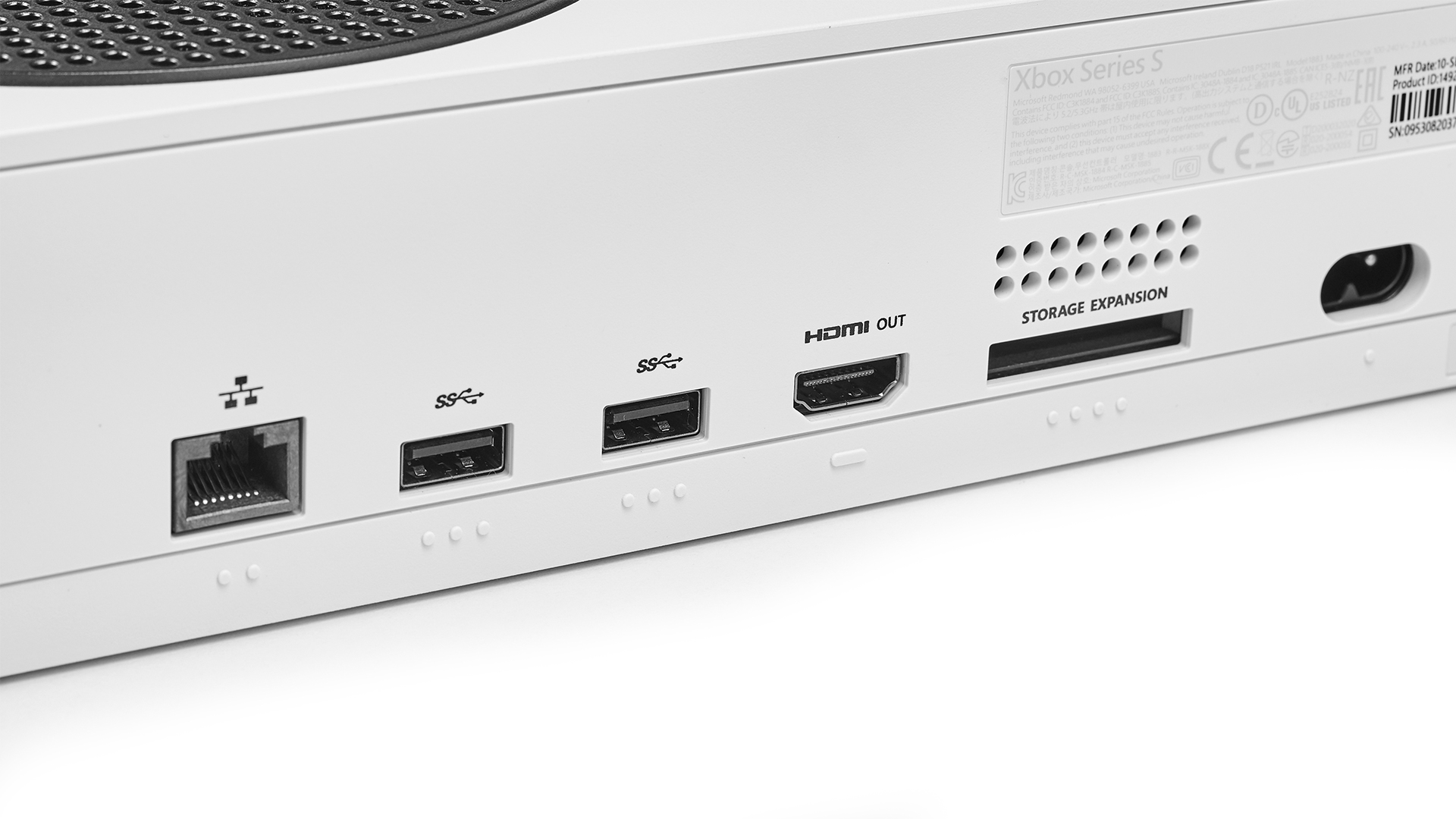
It's worth focusing on one part of the package, in particular: the 512GB SSD. It has ensured that the Xbox Series S is a small console with a big problem. This custom storage solution is an integral part of the system, allowing for drastically faster load times and enabling impressive new features like Quick Resume – letting you swap between games in fewer than 10 seconds. The problem is that just 364GB of that is usable, with 136GB reserved for the markedly faster OS and NVME storage for games held in a suspended state for Quick Resume. The obvious solution is to purchase a Seagate 1TB Storage Expansion Card for £220, but then you're pushing into Xbox Series X pricing territory.
When the Xbox One launched in 2013, it arrived with a 500GB hard-drive with 362GB of available storage. Even then, we cautiously wondered whether that would be enough space in an era of gaming turning increasingly towards digital downloads and regular patching. Here in 2020, faced with an all-digital machine arriving at a time where live-service games are struggling to rein install sizes in under 100GB, and into an environment where Xbox Game Pass ensures that hundreds of games are available to you at any one time, we know that this isn't enough space.
There's a chance that the shift away from 4K will mean that install sizes will fall on Series S, as you won't need to download the massive asset packs, although I also wonder whether Microsoft has a solution in mind for the future – hinging on the success of xCloud, although it feels as if a cloud-based solution to this storage problem is still a ways away.
XBOX SERIES S CONTROLLER
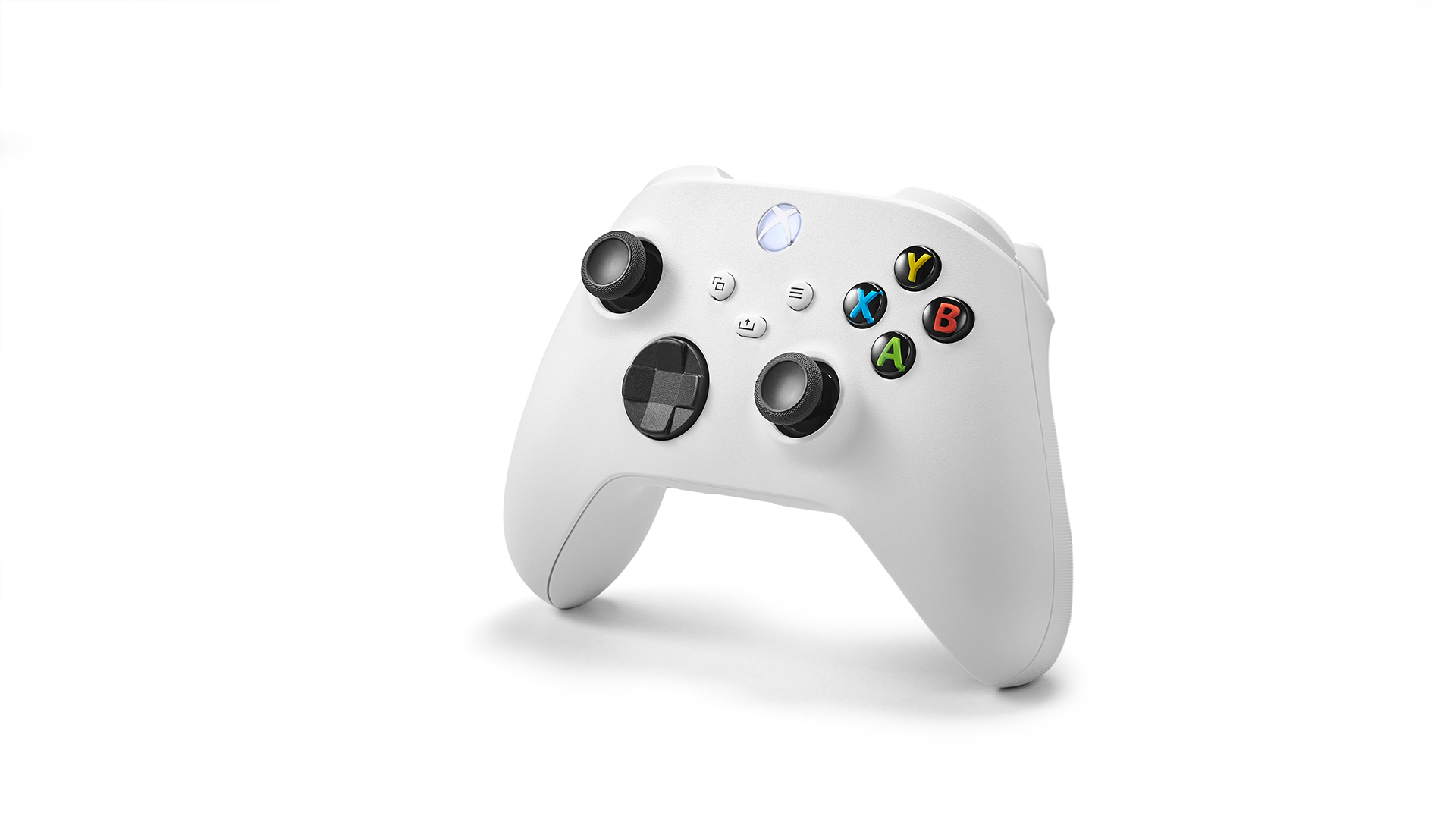
Xbox Series S isn't just an affordable entry to the next generation, it's also a tempting prospect for anybody that jumped ship from Xbox 360 to PS4. If you've spent the last seven years with a DualShock 4 glued to your hands, I think you'll be pleasantly surprised by the Series S controller. The basic layout is similar to that of the Xbox 360 gamepad and the form factor is nearly identical to the Xbox One controller. Microsoft has opted to leverage small iterations that have a big impact. Adjustments to the size of the chassis have been made by the millimeter to ensure that it's a better fit for your palms, while the grips have been resculpted and reweighted to improve comfortability.
It's a beautiful controller to look at and it feels even better in your hands, standing up to the scrutiny of lengthy play-sessions with ease. The length of those sessions is still dictated by two AA batteries, and you should expect to get around 30 hours of playtime – more even, if you aren't using the 3.5mm port for a supported peripheral. There's a Share button with identical functionality to that of the PS4 DualShock 4's equivalent, improved thumbsticks, a new hybrid directional pad, and trimmer analogue triggers to offer more precision and control over your playing experience.
One area where Microsoft has fallen far behind Sony at the outset of the generation is with haptic feedback. Like the Xbox One controller, the Series S variant features Impulse and Rumble motors – delivering context-sensitive haptic feedback right to your palms and fingertips. While it's still impressive technology when properly utilised (rare, outside of the first-party studios) Sony has really taken this technology a step or two forward with DualSense. Still, it's easy to be impressed with the Series S controller; it's fast and responsive, more so than any Xbox controller that has come before it.
I get the sense that the Xbox Series S is designed to be just one conduit in your journey within the broader Xbox ecosystem – games started on the console and continued elsewhere. With that in mind, the Xbox Series S controller has Bluetooth Low Energy (BTLE) support to make pairing with PC, Android, and iOS devices as seamless as can be, and it'll also remember multiple devices which cuts some of the friction out of the process. And, hey, if you do plan on continuing to play beyond the couch and out into the wild with xCloud, this robot white controller is definitely attractive enough that you needn't feel embarrassed whipping it out in public. As for those plastic grips you can buy to bolt the controller to your phone? Well, that's a question for a different day
XBOX SERIES S USER INTERFACE
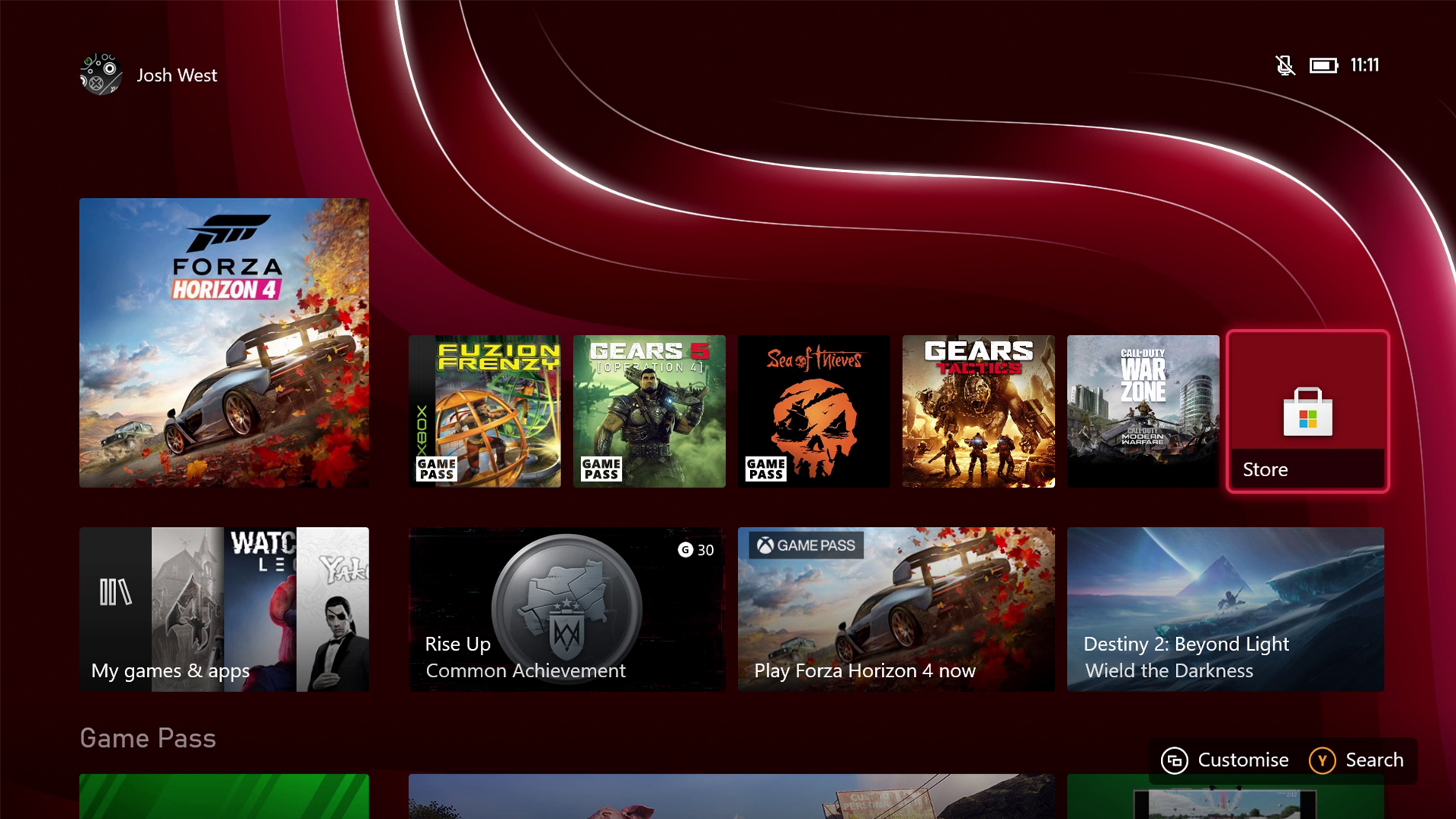
The Xbox Series S is wired into the same basic ecosystem as the Xbox Series X and the Xbox One family of consoles. It shares the same fundamental user interface and user experience, albeit a version that is far faster and more responsive. If you've come into contact with an Xbox One at any point since 2013, you'll recognise the basics: a central dashboard that provides access to your recently played games and opened applications, a customisable space to pin specific blocks, games, and services, with all other functionality squirreled away behind sub-menus.
If the Windows 10-inspired UI was one of the elements that steered you away from the Xbox One, I will say that it has been so heavily scrutinised and revised over the last seven years that it's almost unrecognisable in terms of its underlying functionality. It's easily the best of the Xbox dashboards – and I say this as an unapologetic defender of the Xbox 360 Blades. When you get your head around how it works (which can take a little time), you'll see that it's designed to let you navigate high-traffic areas of the dashboard with ease; flexible enough that you are able to shift the elements that slow you down out of your way.
The Guide remains the true key to the Xbox experience, so much so that it's no surprise that Sony is implementing similar functionality into PS5 with Control Center. The Guide is the nexus, letting you respond to notifications, start parties, send messages, and far more regardless of whether you're in-game, watching a movie, or sat on the dashboard. You can use it to manage the audio settings of your headset and microphone, see recently unlocked Achievements and check the percentage progress of others, and manage game capture if your smartphone isn't within reaching distance. If you want to check in on downloads and updates you can, and there are shortcuts to all major areas of the dashboard including Xbox Game Pass, Settings, and the Store.
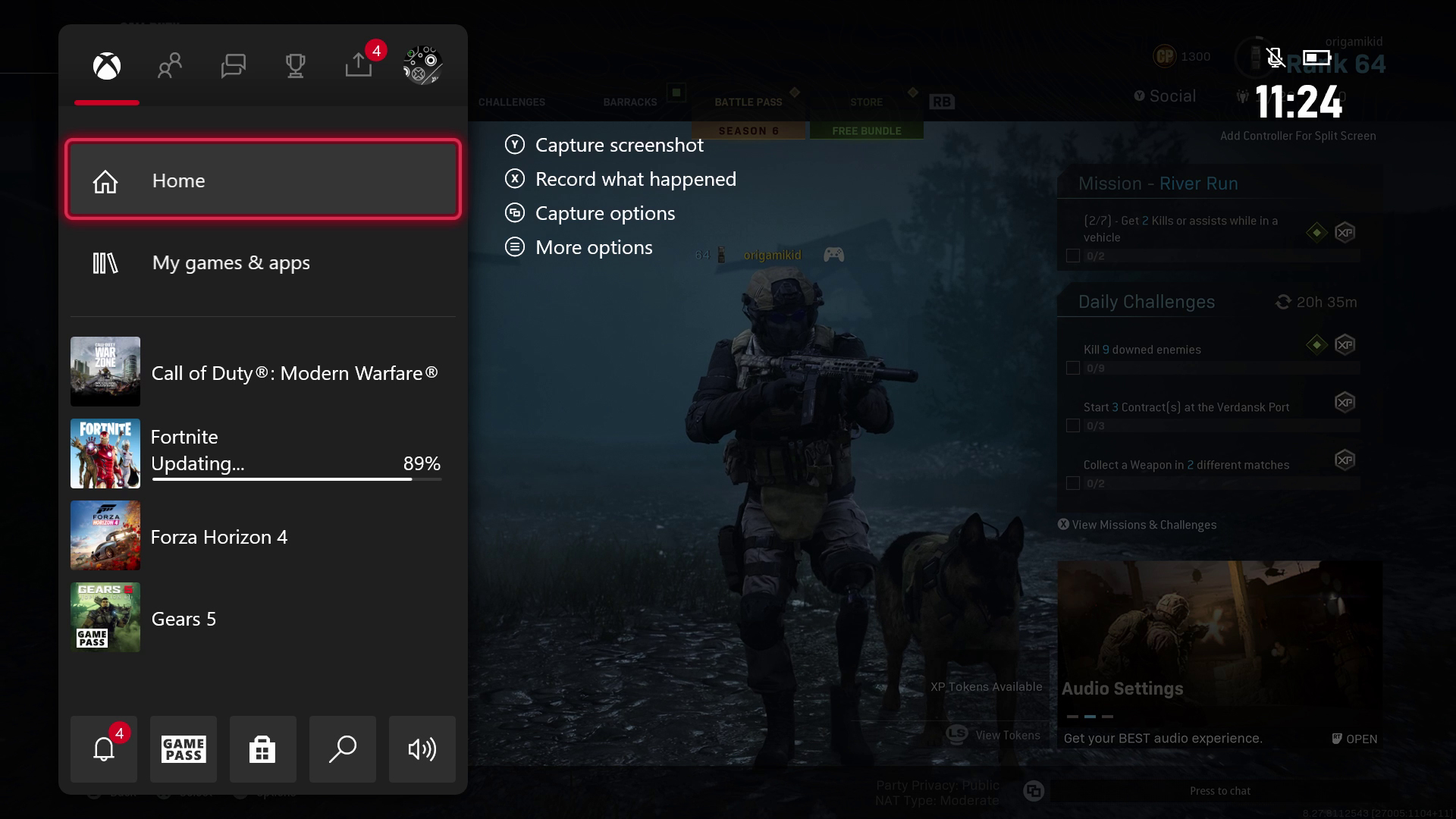
The biggest addition to the user experience is Quick Resume. This feature stores games in a suspended state in the NVME memory of the SSD, meaning that you'll be able to resume playing from exactly where you left off in fewer than 10 seconds. While there's no hard cap for the amount of games that can function in Quick Resume at any one time – it is entirely dependent on the performance requirements of individual titles – you should expect to be able to swap between four without encountering any problems.
While there is no way to track which games are active in Quick Resume, something I criticized in my review of the Xbox Series X, that's actually less of a problem on the Xbox Series S due to the small size of the hard-drive. If you're only playing big AAA games, you shouldn't expect to have more than four or five games installed on the SSD anyway. For large parts of my testing of the Series S, I was able to go from sitting down on my couch to playing a game, with any of the titles installed on the system, within seconds.
The user interface can be a little daunting at first for new users. But once you understand how elements like the Guide function, and how it can be used in tandem with features like Quick Resume, you'll quickly find a user experience designed to maximise play time and reduce friction. Xbox Series S wants to keep you in-game for as much of your time in front of the console as possible, and that's reflected by the functionality of the broader user experience.
XBOX SERIES S SETUP

From a complete powered off state, the Xbox Series S startup will take around 25 seconds from pressing the power button to being signed into Xbox Live. If you aren't all that concerned about the size of your electricity bill (or the planet) the Instant-On power mode will see that startup sequence reduced to fewer than four seconds. Of course, when you first take the Xbox Series S out of its box you'll have a little setup to get through first.
There's an initial 775mb patch to contend with, a lengthy install, and an update for the controller. While you're waiting, you'll have the option of using the new Xbox app for Android and iOS devices to get a head start on the setup. I'd recommend you do this; you'll be able to sign into your new console and your Xbox Live account, and move any existing settings or preferences over from a previous Xbox console over. As was the case with Xbox One, there's a wealth of options buried away in the system settings of the Series S and it's well worth investing a little time going through them all.
The controller can be remapped at a system level to create default preferences for everything from thumbstick inversion to the functionality of the triggers, share, and face buttons. Privacy, power, and parental controls are easy to manage and leverage, and there's a wealth of display and audio settings to tinker around with too. If you're anything like me, you'll also want to dial into which notifications you're able to receive, as they can get annoying pretty quickly. You'll have plenty of time for all of this while you wait for games to download, install, and update. While this is hugely dependent on your internet reliability and download bandwidth caps, you really feel the rising size of games when you're staring at an empty hard drive. It's worth noting that you still aren't able to download multiple games or updates simultaneously, and there is no easy way to reorder these in terms of priority.
This I can learn to live with, although I do hope more developers and publishers only increase the amount of control we have over storage management. Some games will let you portion off which parts you're done with and uninstall them, freeing up space for other titles – to use Modern Warfare as an example, once multiplayer became my focus I was able to remove the campaign files from the console. Given the size of the hard drive on the Series S, it's going to be a much needed feature in the years to come.
XBOX SERIES S XBOX LIVE
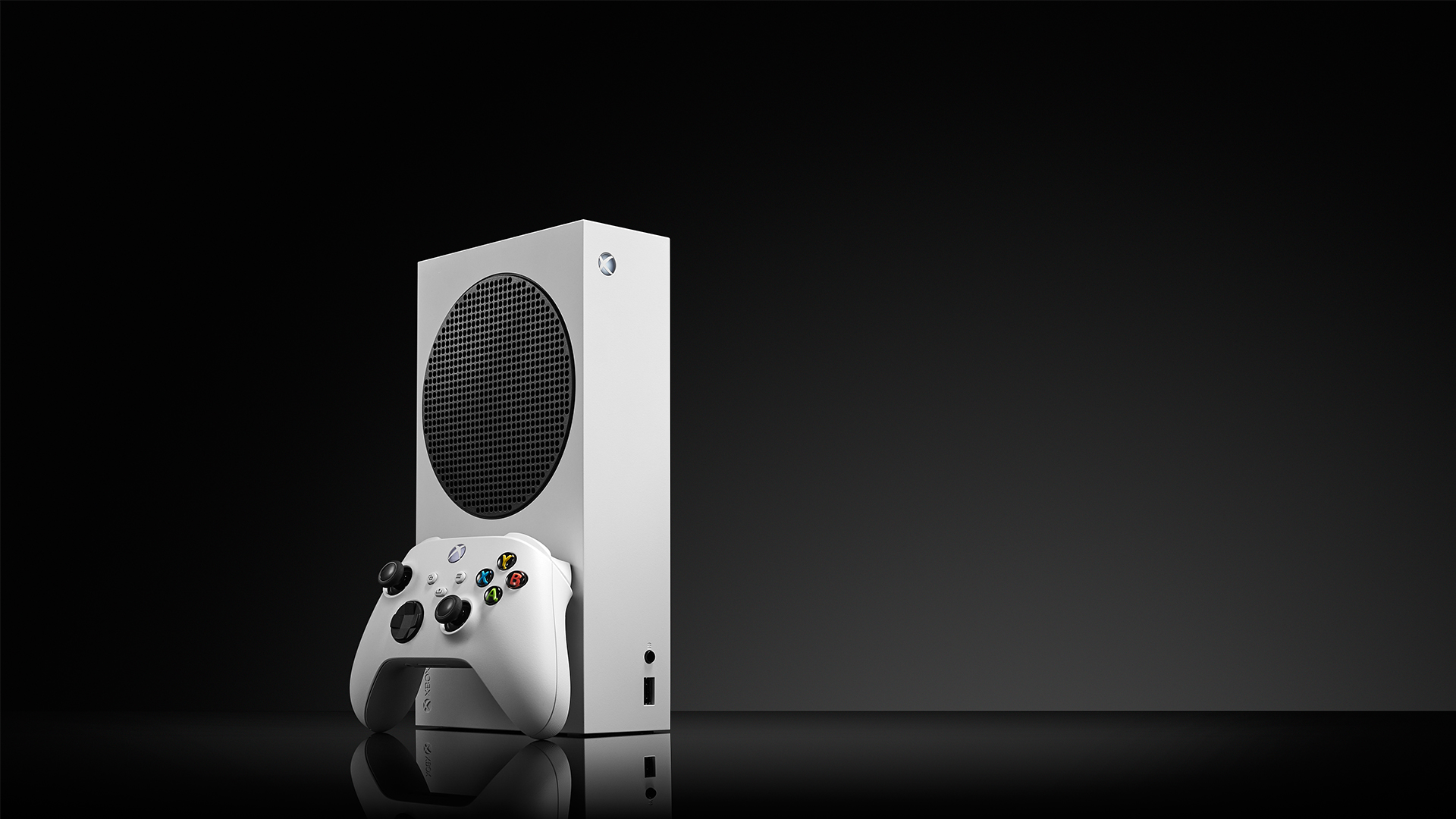
Xbox Live has always been at the heart of the Xbox experience. The Series S is fully integrated with the current iteration of the ecosystem, which means that your Xbox legacy – regardless of whether you are upgrading from Xbox One or last used an Xbox 360 – will be there from the second that you sign in. That includes your Gamerscore and Friends, your existing digital licenses, profile and preferences, and, more importantly, all of your save data too.
Microsoft's decision to integrate universally-synced cloud saves with Xbox Live back in 2013 has proven to be one of the best decisions the company has ever made. This long-standing functionality completely transforms backwards compatibility on Xbox Series S, ensuring you're able to continue where you left off on games dating back to the Xbox 360. Should you still have that console in your house, you're now able to dust it off and upload any saves on its hard drive and make them available on Series S. It feels like magic every time you boot up a game that was released in 2005 only to find your progress there waiting for you.
As Microsoft has finally integrated a Share button into the Xbox Series S controller, the company has also overhauled its capture options through Xbox Live. As the console is targeting standard definition resolutions, capture has been capped to reflect that. The resolution of captured screenshots and video is variable depending on what television the system is connected to; 4K at 60fps capture is possible if you're connected to a 4K television, otherwise it'll be capped at 1080p. The Xbox One's Game DVR launched with a cap of 720p at 30fps, while the One X could just about manage 4K at 30, so this is a massive step up. All capture is now beamed straight to the Cloud and will appear within the Xbox App on your Smartphone.

As the Xbox Series S is wired into the broader Xbox ecosystem, there are no restrictions on who you are able to play with across generations. If you have friends who are playing games on Xbox One or PC, you'll still be able to send them messages and start parties over Xbox Live. Games that support cross-play also function fine in our testing, so expect to find no problem jumping into multiplayer games with Fortnite or Call of Duty Warzone players, for example, who are on PS4. Xbox Live simply recognises the Series S as another console on the network, and I have encountered no explicit restrictions as a result of the generation shift.
It's worth mentioning that while Xbox Game Pass isn't by any means new, it does feel utterly essential on Xbox Series S. I couldn't imagine using this all-digital console without an active subscription to Xbox Game Pass Ultimate, which ties Game Pass, Xbox Live Gold, and xCloud into one neat package. There are hundreds of games available, with titles rotating in and out every month, running the spectrum of massive first-party AAA games to smaller indie titles. It's a curated selection of games that really does seem to have something for everyone.
Honestly, it may as well be mandatory. And I only say that because digital games are still wildly expensive to purchase outright. If you're purchasing a Series S just to play the best versions of your favourite live-service games at a standard resolution, or planning on picking up a few exclusives here and there, it's still worth giving Xbox Game Pass a shot. If you're coming into Series S new to Xbox, there's a wealth of fantastic games waiting there for you – the service is unparalleled in its value for money.
XBOX SERIES S ENTERTAINMENT
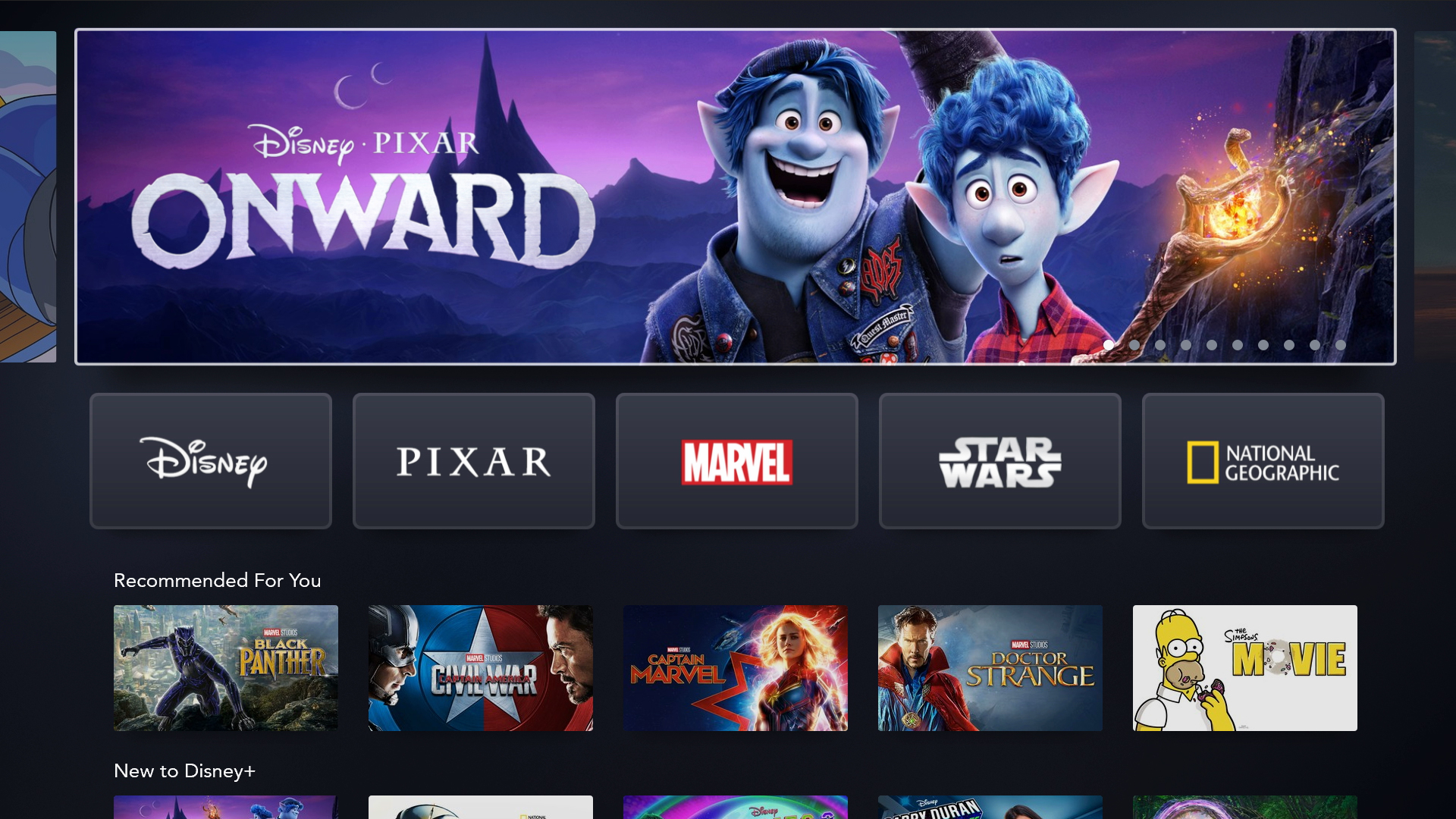
Throughout the previous generation, Microsoft dialed back its ambitions as an all-encompassing media portal and realigned the Xbox One to be a gaming machine first and a media center second. That's a trait shared by the Xbox Series S. At launch, there are over 28 entertainment apps available in the store, including the big hitters like Amazon Prime, Disney Plus, and Netflix. Thankfully, each of the entertainment apps come with a small download size, so you should expect to find them holding all that much of the SSD hostage.
The Xbox Series S is designed to be played on 1080p TVs and 1440p monitors, and media applications look great on a big screen. Because of the shared ecosystem environment with Xbox One, the apps have been well tested and designed through years of iteration. It is possible to download and use a web browser from the store, although its utility seems redundant given the ubiquitous nature of second-screen devices these days. It would have been nice if Microsoft found a solution to controlling media with the Xbox app on your smartphone. I'm tired of turning my controller off to save on battery and back on every time I need to pause a movie, but progress is incremental with this type of functionality.
With the Series S lacking a disk drive, it is possible to rent entertainment through the redesigned Xbox store itself should you have an aversion to any of the subscription-based applications. You can also access your own external media from a OneDrive account, and the Series S also supports playback from USB storage devices and media streaming from PC via DLNA. It's also great to see the functionality of music apps retained and tied directly into the Guide; download Spotify (or any of the other supported music services) and you'll be able to play your favourite tunes in the background of the dashboard and over in-game audio, using the Guide to change tracks and even rebalance the levels between game audio and your playlists.
I was a little disappointed to find that Quick Resume functionality did not extend to media applications. If you're watching a show on Disney Plus or a movie on Netflix, the console won't suspend it in place should you decide to switch your attention to a game and back again. While I'm sure there are practical reasons for this, if you're anything like me (which is to say, perpetually indecisive) it would have been a welcomed option to quickly leap between the games and apps vying for my attention with ease. Still, that minor gripe aside, the Xbox Series S is a capable, unassuming entertainment hub – even as it focuses on putting games at the center of the experience.
XBOX SERIES S BACKWARDS COMPATIBILITY
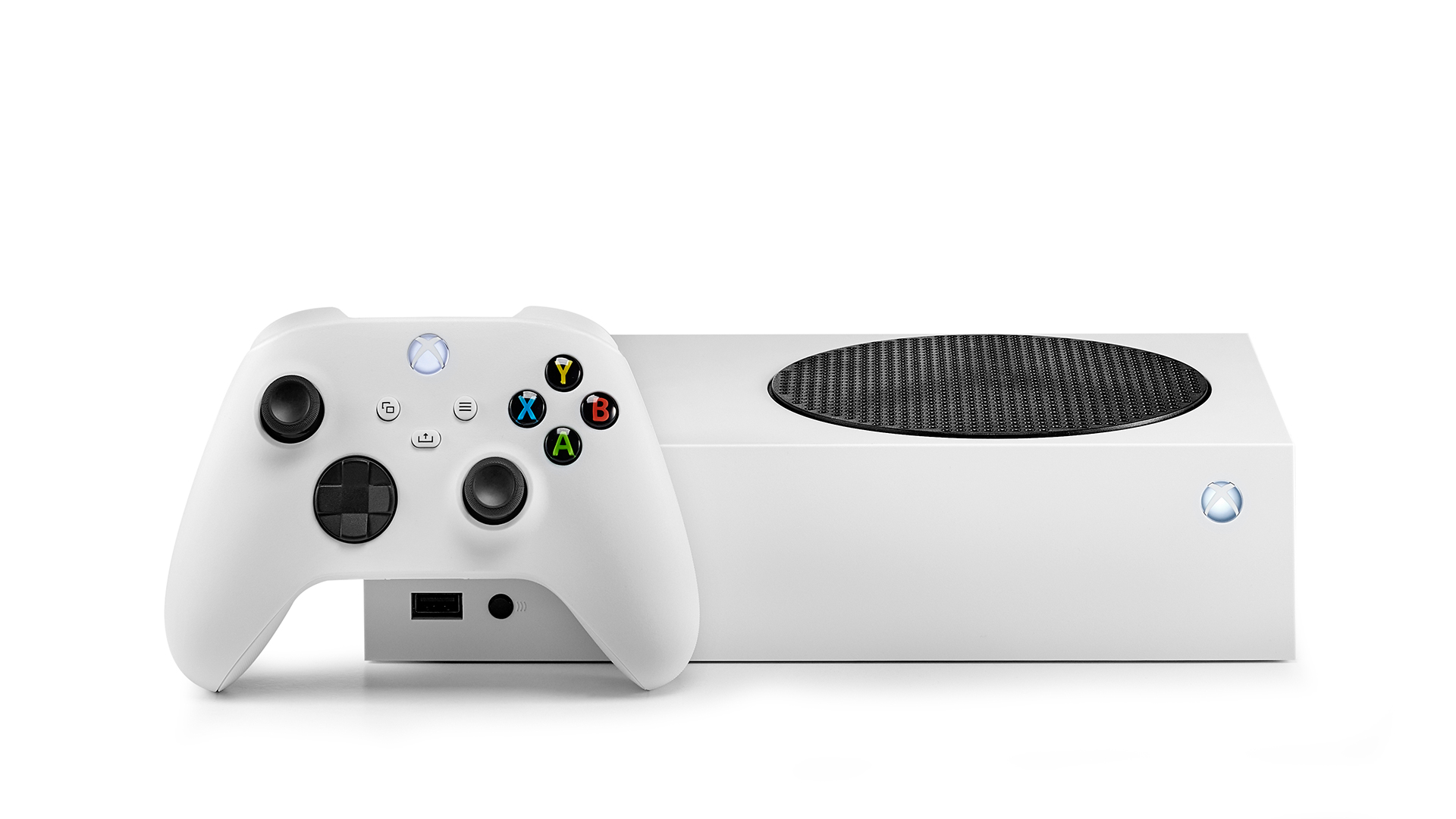
The Xbox Series S has a custom processor with eight AMD Zen 2 CPU cores and a 4 Teraflop RDNA 2 GPU. The console delivers four times the processing power of an Xbox One console and three times the GPU performance, sharing the same underlying architecture with the Xbox Series X. If you're worried about the GPU when compared to the Xbox Series X, PS5, or even the Xbox One X and PS4, don't be. This is a console designed for those who aren't sold on the promise of 4K. It's a system that operates at a maximum resolution of 1440p, optimised to deliver experiences at standard definition and 60 frames per second.
The Xbox Series S has full backwards compatibility support for Xbox One games, and it supports all Xbox 360 and original Xbox games that ran on the last-generation system. That means there are thousands of games available through the store from day one. Legacy titles run natively on Series S, which means that they benefit from the performance of the CPU and SSD. You should expect a significant reduction in load times – lowering by as much as 60% in our testing – across the spectrum of available titles, while the games themselves typically run smoother, look crisper, and enjoy steadier frame rates.
The backwards compatible titles that benefit the most from the Series S architecture are those that were once optimised for Xbox One X. Many of these titles, and there are hundreds of them, offered players the opportunity to lock into different performance modes – focusing on fidelity, framerate, or a balance between the two. While the One X was able to handle these performance modes just fine, it had a tendency to struggle with stability on games that offered locked or uncapped frame rates.

What you'll find with Xbox Series S is that the CPU, SSD, and better GPU are able to really deliver in these high-resolution scenarios. System intensive games such as Monster Hunter World, Hitman, Rise of the Tomb Raider, and Final Fantasy XV feel as if they are running as the developers always intended them to. While I was able to notice the occasional dip in frame rate during moments of intense action, they were for the most part stable and less sluggish. Better still are the Xbox One exclusives, many of which look and play as if they could have released yesterday. And If you really want to be impressed with your Series S, jump back into Fallout 4 and find its frame rate basically doubled from 30 to 60fps – the free gains the system is able to provide to legacy titles is incredibly impressive.
While the Series S is designed to be played through a standard definition 1080p television, you can plug it into a 4K, HDR-enabled set and see some marginal visual improvements. For starters, it's worth mentioning that the console will scale the picture to 4K – it's fine, and, as with any hardware scaler, there will always be a little loss of picture crispness in the transition. Games will also benefit from Auto-HDR, a machine learning algorithm which is able to automatically add high dynamic range flourishes to older games. While it's a nice touch, it isn't by any means essential. If all you've got to play with is a standard definition TV, you won't be disappointed with the results.
The Xbox Series S is a surprisingly powerful, capable machine. As this is a console designed to prioritise frame rate above all else, it's the games that have performance options that really flourish. It's worth mentioning that I did encounter the occasional issue with backwards compatible titles freezing up or crashing upon an initial boot, fixed by backing out to the Guide and diving back in. This was an infrequent occurrence that will hopefully be smoothed out ahead of launch.
XBOX SERIES S GAMES

It's difficult to know right now how set for the future the Xbox Series S really is. Both it and the Xbox Series X have arrived without any games that really test the framework of their architectures or push either system to its limits. There are legacy titles that have been Optimised for Series S and, while certainly impressive, they don't give us a clear view of future proof this console is going to be once developers start trying to push the Xbox Series X and PS5 to their limits.
But here's what I will say, it feels as if we have reached the limits of visual fidelity and resolution, and this will be a generation fought on how games feel and how solidly they are able to perform. The Series S is a console designed to deliver on that promise and little else, and it does it incredibly well. If we look at any of the Optimised for Series S titles that were made available during the review window, they just feel better than I have ever been able to experience them.
Forza Horizon 4, Gears 5, and Sea of Thieves greatly benefit from having their frame rates locked to 60fps. It's difficult to appreciate until you experience it for yourself, but these optimised titles remove a lot of the sluggishness that we've come to expect from the modern era of console gaming. They are smooth and stable, working to heavily to reduce input to screen latency. Take that stable performance and combine it with faster load times and to even how much quicker navigating in-game menus is, and you really get the sense that we're about to turn a corner. The Series S promotes the idea that the focus for this generation will be on removing as much friction out of the experience of playing games as possible.
Like the Series X, the Series S comes with support for Variable Refresh Rate (VRR) and Automatic Low Latency Mode (ALLM) for compatible HDMI 2.1 televisions, as well as support for 120fps in compatible games. While these innovations for home consoles greatly reduce latency and improve responsiveness, they require lining the system up with a compatible 4K TV, and you'd need to purchase an Ultra High Speed HDMI cable. While the features are welcomed, they almost run counter to the intended purpose of the Series S, which is to be the best place to play for people who can't afford or aren't interested in upgrading to a 4K capable screen.
Xbox Series S Final Thoughts

Much like the Xbox Series X, the Series S feels like a capable console that's in need of new games that are engineered to take advantage of its unique architecture and powerful hardware configuration. It will be up to developers to determine how the Series S is leveraged, but I can only hope that the divide between systems focusing on a maximum of 4K at 60fps and 1440p at 60fps will mean that we get more choice as consumers.
Even without 4K as a viable display option on Series S, the option to make a choice between the prioritisation of locked resolution at 1080p and a mode that pushes resolution – improving lighting, shadow density, etc – at a standard definition while still hitting a stable frame rate will be a massive improvement over games as we experience them today. Yakuza: Like a Dragon offers this at launch with good results, and hopefully it will be the first of many to come. More choice and control is never a bad thing.
Ultimately, the Xbox Series S arrives as an impressive console but I think it needs some time to really figure out who its target audience will be. For PS4 players who abandoned the Xbox ecosystem at the turn of the last generation and are now looking to come home, the Series S is a far more attractive proposition than the Series X. There's a wealth of amazing Xbox games to be played if you skipped out on Xbox One, and the value proposition of getting many of these through Xbox Game Pass is effectively unrivaled. Factor in the raw performance boost offered to backwards compatible games by the hardware, and you're looking at an attractive console at an affordable price point.
The real question mark is over its viability in the years ahead. The focus on delivering excellent feeling games at 1080p resolution should mean that no player gets left behind by the industry's fascination with targeting greater fidelity. As the prices of 4K TVs begin to drop in the coming years, and as the small hard drive on this console becomes a larger and more restrictive problem over time, I am concerned that the Series S may become obsolete through no failure of its own. Still, that's a problem for the future. Right now, the Series S does exactly what it said it would do: deliver next-generation performance at current generation graphical standards.

Josh West is the Editor-in-Chief of GamesRadar+. He has over 15 years experience in online and print journalism, and holds a BA (Hons) in Journalism and Feature Writing. Prior to starting his current position, Josh has served as GR+'s Features Editor and Deputy Editor of games™ magazine, and has freelanced for numerous publications including 3D Artist, Edge magazine, iCreate, Metal Hammer, Play, Retro Gamer, and SFX. Additionally, he has appeared on the BBC and ITV to provide expert comment, written for Scholastic books, edited a book for Hachette, and worked as the Assistant Producer of the Future Games Show. In his spare time, Josh likes to play bass guitar and video games. Years ago, he was in a few movies and TV shows that you've definitely seen but will never be able to spot him in.



